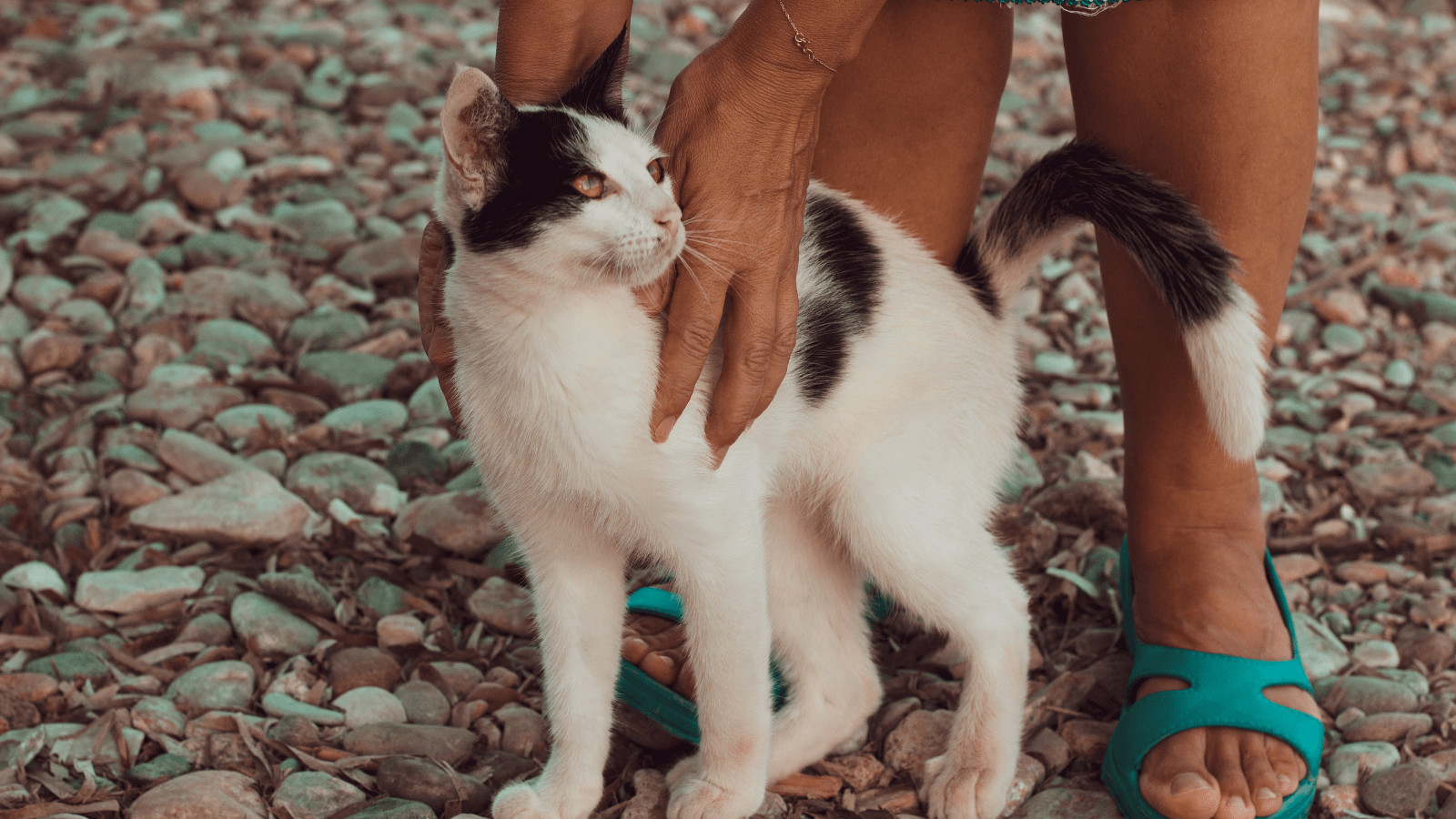This article will cover tips on how to make a cat feel safe in a new home. As you know, cats are unique animals that are quite fun to own and love. However, they don’t like change very much. Once they’re settled and comfortable in a particular place, they can be negatively affected when moving to another location.

However, as a cat owner, there are several reasons why you might need to move to a new home. You may also have just acquired a new cat and want to make it easier for her to adjust quickly to staying with you. To help you get your cat settled quickly, here are some tips on how to introduce a cat to a new home and also how to make a cat feel comfortable in a new house;
Table of Contents
1. Make Your Cat A Safe Space
If you want your cat to feel safe in a new home, you have to create a safe space for your cat.
This post contains affiliate links. However all the information provided on this site are my own honest opinions. See more in Disclaimer.
The location chosen should be in a room with secure doors, windows, and ceilings. Also, it should feature your cat’s favorite scents, colors, toys, etc.
You can also place a few treats around the selected location, which will tempt your pet to explore the new area and gradually understand that this place is for her.
It will be best if you can recreate her spot in your previous home. Furthermore, the room selected should be a quiet one. Only humans that your cat is familiar with should be allowed in this room or safe area.
2. Cat Proof The Place
Catproofing is always necessary, whether you’re moving to a new home or not. There’s a lot to do when it comes to catproofing.
First of all, you want to make sure there are no nearby flames – fireplaces or candles. Cats are curious animals and will explore those dangerous areas if they are left exposed.
Also See:
Breakable stuff like glasses, ceramics, etc., should be far from your cats’ reach. If they fall and break, the tiny pieces might injure your cat or worse; she may ingest it.
Also, ensure that no loose electrical cords are exposed to prevent electric shock, and the windows and latches are secured.
3. Provide Food, Water, And Litter
Food, water, and litter are your cats’ basic amenities. There should be plenty of food available for your cat, and the type chosen would depend on what your cat likes. However, a mix of wet and dry foods are ideal for more variety.
If you aren’t around most of the time, you should get ‘timed food and water dispensers’ to feed your pet on time automatically, so your cat doesn’t get hungry while you are away.
A simple plastic litter box would be ideal for the litter, and it’s necessary to have a spare litter box. As in the case of food and water, if you won’t be around most of the time, you should get an automatic self-cleaning litter box and also learn how to litter train a cat if she is not trained already. If you moved to a small apartment, you may want to see this list of the best cat litter boxes here.
4. Maintain Your Cat’s Daily Routine
In your new home, you should maintain the daily routine your pet is used to. It shouldn’t change, and it’s necessary to return to the usual schedule if you had some unusual day while relocating, as soon as you can.
According to Petlifesa, a study shows that a change in your cats’ routine can lead to physical health problems.
Your pet should wake up, eat, play, groom, and sleep at the same time as it normally would before you moved. These are the most important activities in your pets’ routine.
If you’re going to change your cats’ routine, it’s something you should do gradually, never immediately. As you follow up with your cat on usual routines, observe your cat’s behavior and take notes.
Some cats don’t handle change well and may become depressed. See this post on how to cheer up a depressed cat if you do not see any results with your efforts to make your cat feel safe.
5. Spend Time With Your Cat
Spend time with your cat is a vital tip on how to make your cat feel safe in a new home. This tip is especially important when you’re moving into a new home with new roommates or family.
It will be best to keep your cat where it sees only you as it is not used to all these new strangers around. Spending time with her will also let her understand that she’s safe because you’re there for her.
If you’ve got work and won’t be around most of the time, this is even more important. If possible, it won’t be bad adjusting your work schedule a bit until your pet is settled.
As you spend time together, try to identify and eliminate any factor that makes her feel insecure in your new home.
6. Gradually Introduce Her To Other Rooms
Once you arrive in your new apartment, it’s recommended that you limit your pet to one room; her safe space. Even if your cat doesn’t feel safe, she will be reluctant to leave this room.
However, the goal isn’t to make her accustomed to her new room but the house. So, it would help if you gradually introduced her to other places in the house once she’s comfortable with her room.
How long does it take a cat to adjust to a new home?
Getting her used to the whole house could take days, weeks, or even months, depending on the nature of your cat. Whenever you want to introduce her to a new room, place some items (like toys) that she will love around the place. Treats will work too.
See the video below with more tips on how to make your cat comfortable in a new house.
Conclusion
If you’ve got a cat and you have no choice but to change residence. Going through the tips above on how to make a cat feel safe in a new home should help you make your cat’s transition easier.
The important thing to remember is to take things slow and be gradual in introducing her to other rooms until you cover the whole house. When your cat is well adjusted you can now occasionally take her outside for even more fun. See our post on how to train a cat to walk on a leash.
Don’t forget to share this post on making a cat feel safe with all your friends.










